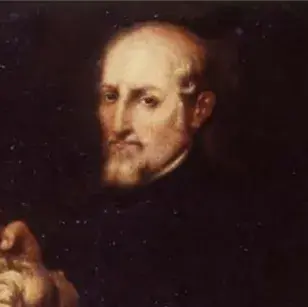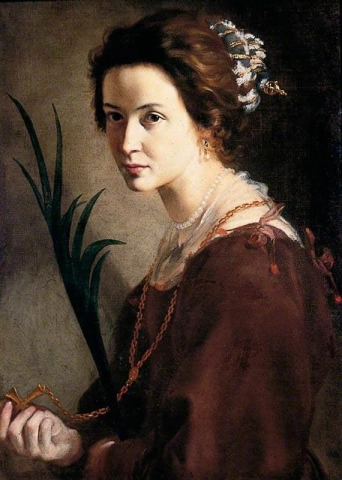

Hand painted reproductions of Alonso Cano
Alonso Cano: A Master of Spanish Baroque Art
Alonso Cano was a renowned Spanish painter, sculptor, and architect of the 17th century, celebrated for his contributions to the Baroque movement. His works masterfully combined dramatic intensity, delicate detail, and spiritual depth, making him one of the most significant artists of Spain’s Golden Age.
Early Life and Artistic Training
Born in 1601 in Granada, Spain, Alonso Cano was introduced to the arts at an early age. His father, Miguel Cano, was a respected woodcarver, which exposed young Alonso to sculptural techniques and artistic craftsmanship. Seeking to refine his skills, Cano moved to Seville, where he trained under Francisco Pacheco, the same mentor who taught Diego Velázquez.
During his formative years, Cano developed proficiency in painting, sculpture, and architecture. His early works reflected a strong influence from the Mannerist style, but as he matured, he embraced the dynamic compositions and emotional intensity characteristic of the Baroque movement.
Artistic Development and Style
Alonso Cano’s artistic versatility set him apart from many of his contemporaries. His paintings exhibited a harmonious blend of realism and idealized beauty, with soft color palettes and masterful use of chiaroscuro (light and shadow contrasts) to create depth and drama. His religious compositions, such as "The Virgin of the Immaculate Conception" and "Saint John the Baptist," display a remarkable serenity and grace, reminiscent of Raphael’s influence.
As a sculptor, Cano was known for his elegant and expressive figures. His wood and marble sculptures captured fluid movement and delicate features, showcasing his deep understanding of human anatomy and divine representation. His architectural contributions, particularly in Granada, further demonstrated his creative vision and technical skill.
Themes and Significance
Religious devotion was the dominant theme in Alonso Cano’s works. His paintings and sculptures frequently depicted biblical narratives, saints, and the Virgin Mary, reflecting Spain’s Counter-Reformation ideals. Cano’s ability to infuse his subjects with spiritual depth and human emotion made his religious imagery both inspiring and relatable.
His work also demonstrated a deep understanding of classical composition, combined with the drama and movement of Baroque art. He balanced idealism with realism, ensuring that his figures appeared both divine and accessible to viewers. His paintings and sculptures became powerful tools of religious devotion, reinforcing Catholic values through visual storytelling.
Achievements and Influence
Alonso Cano’s reputation earned him a prestigious position as the official painter to King Philip IV. However, his fiery temperament often led to conflicts, and at one point, he even fled Madrid due to accusations of murder—a charge from which he was later absolved. Despite his personal struggles, his artistic career continued to flourish.
One of Cano’s most significant contributions was his architectural work in Granada, where he was appointed the chief architect of Granada Cathedral. His designs for the cathedral’s façade and interiors reflected his mastery of space, proportion, and ornamentation, leaving a lasting impact on Spanish ecclesiastical architecture.
Cano’s influence extended beyond his lifetime, inspiring future Spanish artists, particularly those interested in religious art. His ability to merge painting, sculpture, and architecture into a cohesive artistic vision cemented his legacy as a key figure in Spanish Baroque art.
Legacy
Alonso Cano remains one of Spain’s most celebrated Baroque artists, recognized for his ability to evoke deep spirituality through his works. His paintings and sculptures continue to be studied and admired for their grace, expressive power, and technical brilliance.
His impact on Spanish art is undeniable, influencing later artists such as Bartolomé Esteban Murillo and Francisco de Zurbarán. His works are housed in prestigious museums, including the Prado Museum in Madrid and the Cathedral of Granada, where visitors can witness his artistic genius firsthand.
Where to Find Handmade Oil Painting Reproductions of Alonso Cano’s Art
For those looking to own a piece of Alonso Cano’s artistic legacy, Painting On Demand (POD) offers high-quality handmade reproductions of his most famous paintings. These reproductions allow art lovers to appreciate the beauty and spiritual depth of Cano’s work in their own spaces.
Alonso Cano’s art continues to captivate audiences with its emotional depth and technical excellence, solidifying his place as one of the masters of Spanish Baroque art.
Imagine owning an original-style painting by one of the greatest artists in history. At POD, we offer you the chance to make this dream a reality. Each canvas is faithfully reproduced down to the smallest detail, allowing you to experience the beauty of the artist’s vision in your own home.
Our reproductions are crafted by experienced painters using the finest materials and time-honored methods. We are committed to delivering works of exceptional quality that will inspire and bring joy to your family for generations to come.





